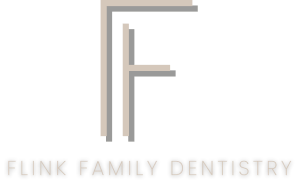1930 E. Rosemeade Pkwy #103 Carrollton, TX 75007


Sedation dentistry has revolutionized dental care by helping patients relax during procedures. It is especially beneficial for those with dental anxiety or undergoing extensive treatments. Different types of sedation are used based on the patient’s needs and the procedure’s complexity, ranging from mild relaxation to deep sedation. This comprehensive guide explores various types of sedation in dentistry, from laughing gas to IV sedation, highlighting their benefits, uses, and considerations.
1. Laughing Gas (Nitrous Oxide)
Dentists administer laughing gas, or nitrous oxide, through a mask placed over the nose. It is one of the most common forms of sedation in dentistry due to its safety and effectiveness. Nitrous oxide helps patients relax without putting them to sleep, making it suitable for individuals with mild to moderate dental anxiety. It works quickly and wears off rapidly once the mask is removed, allowing patients to drive themselves home after the procedure.
2. Oral Sedation
Patients take prescribed medication, usually in the form of a pill, for oral sedation before the dental procedure. This medication induces a deeper state of relaxation than nitrous oxide and is often suitable for patients with moderate dental anxiety or for longer procedures. The effects can vary from mild to moderate sedation, and patients may feel drowsy but remain conscious throughout the treatment.
3. IV Sedation (Intravenous Sedation)
Medical professionals administer IV sedation directly into the bloodstream through a vein, allowing them to precisely control the level of sedation. This type of sedation induces a deeper state of relaxation compared to oral sedation and is often used for more complex procedures or for patients with severe dental anxiety. IV sedation can range from moderate to deep sedation, where patients may have limited awareness of the procedure and may not remember it afterward.
4. General Anesthesia
The deepest form of sedation used in dentistry is general anesthesia. Dentists typically reserve it for extensive procedures or for patients with severe dental phobia who cannot be managed with other sedation methods. It induces a state of unconsciousness, making patients completely unaware and free from pain during the procedure. An anesthesiologist or a trained dentist anesthetist administers and monitors general anesthesia in a hospital setting or specialized dental office.
Choosing the Right Sedation Option
The choice of sedation depends on factors like the patient’s medical history, anxiety level, and procedure complexity. Dentists evaluate these factors to determine the best sedation method, ensuring comfort and safety throughout the treatment.
Benefits of Sedation Dentistry
- Reduced Anxiety: Sedation helps patients feel more at ease during dental procedures, reducing fear and anxiety.
- Improved Treatment Experience: Patients can undergo longer or more complex procedures in a relaxed state, often without discomfort.
- Increased Cooperation: Sedation can improve patient cooperation, making it easier for dentists to perform procedures effectively.
Safety and Considerations
While sedation dentistry is generally safe when administered by trained professionals, patients must follow pre-procedure instructions, including fasting guidelines for certain types of sedation. Dentists monitor patients closely throughout the procedure to ensure their safety and comfort.
Sedation dentistry offers valuable options for patients with dental anxiety or extensive treatment needs. Techniques range from mild relaxation with laughing gas to deep sedation via IV sedation or general anesthesia. These methods cater to various patient needs and procedural requirements. By discussing options with a qualified dentist, patients can understand the benefits and considerations of each type and make informed decisions to enhance their dental care experience.
Anyone seeking to alleviate dental anxiety or considering sedation for a procedure should consult a dentist experienced in sedation dentistry. This is the first step toward a more comfortable and stress-free dental visit. Sedation dentistry continues to evolve, providing effective solutions to improve patient comfort and ensure positive outcomes.

